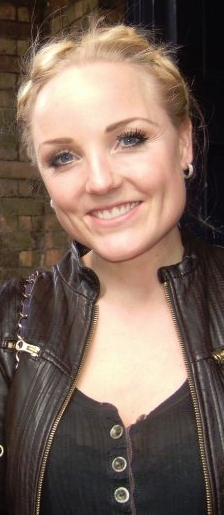 With songs such as Seasons of Love, Out Tonight, and Without You, Rent the musical is a tale of a group of friends living n the East Village of New York City, about falling in love, finding your voice and living for today under the shadow of HIV/AIDS. Rent is based loosely on La Boheme, and has won the Tony Award for Best Musical and the Pulitzer Prize for Drama, a pop cultural musical phenomenon.
With songs such as Seasons of Love, Out Tonight, and Without You, Rent the musical is a tale of a group of friends living n the East Village of New York City, about falling in love, finding your voice and living for today under the shadow of HIV/AIDS. Rent is based loosely on La Boheme, and has won the Tony Award for Best Musical and the Pulitzer Prize for Drama, a pop cultural musical phenomenon.
For this hugely significant musical, there is an extremely significant musical theatre star set to join the show’s ranks. Kerry Ellis will be joining the Rent in Concert 2014 Tour, following the announcement of a third and final leg to the current UK tour of Rent in Concert. Ellis will be helping to celebrate 20 years since the first staged performance of Rent, with the West End leading lady and Broadway star returning to the role of Mimi in this iconic concert version.
The show toured the UK earlier this year in April starring Ellis, Rory Taylor and Nikki Davis-Jones. Last month it was announced that the show will return in November starring Atomic Kitten’s Natasha Hamilton and Taylor, before its final run in January and February 2014 with Ellis.
Ellis quickly built up a reputation of a leading lady, with starring roles in London and on Broadway. Beginning by originating the role of Meat in Queen’s We Will Rock You, Ellis became the first British Elphaba in the West End’s Wicked. Ellis then transferred Broadway and played Elphaba in the same musical for six months before returning to London. Ellis has turned her hand to many other West End roles since, with other leading role credits include Nancy in Oliver!, Eliza Doolittle in My Fair Lady, Ellen in Miss Saigon and Fantine in Les Miserables. Add the 20th anniversary celebratory tour of Rent to that list and you have an incredibly versatile and entertaining performer.
Image courtesy of Wikimedia Commons.

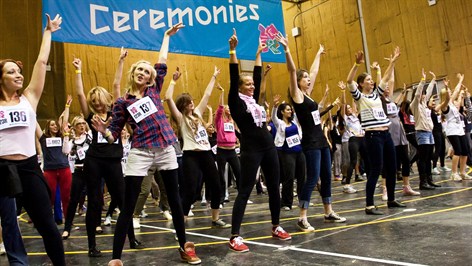 A year on from the London 2012 Olympic Games, there is much celebration about the phenomenal events which happened precisely one year ago. Over the past year much has come from the Olympic legacy, with sports and cultural institutions benefitting from the heat wave emanating from the dust of the Olympics in the capital.
A year on from the London 2012 Olympic Games, there is much celebration about the phenomenal events which happened precisely one year ago. Over the past year much has come from the Olympic legacy, with sports and cultural institutions benefitting from the heat wave emanating from the dust of the Olympics in the capital. As the end of the last school and college holidays draw near, students all over begin to contemplate the future. In collecting their A2 results from Sixth Form or college, there is much speculation as to whether the student achieved the grades to get into their selected universities, and then study the subject they applied for initially.
As the end of the last school and college holidays draw near, students all over begin to contemplate the future. In collecting their A2 results from Sixth Form or college, there is much speculation as to whether the student achieved the grades to get into their selected universities, and then study the subject they applied for initially.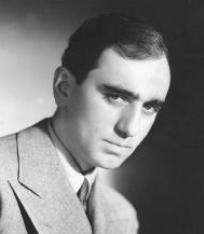 Busby Berkeley, born November 29 1895 (died March 14 1976) was a highly influential Hollywood director and musical choreographer, famous for his elaborate musical production numbers that involved complex choreography through geometric patterns. Berkeley’s works used large numbers of showgirls and props as fantasy elements in on-screen performances which were both captivating and impressive.
Busby Berkeley, born November 29 1895 (died March 14 1976) was a highly influential Hollywood director and musical choreographer, famous for his elaborate musical production numbers that involved complex choreography through geometric patterns. Berkeley’s works used large numbers of showgirls and props as fantasy elements in on-screen performances which were both captivating and impressive.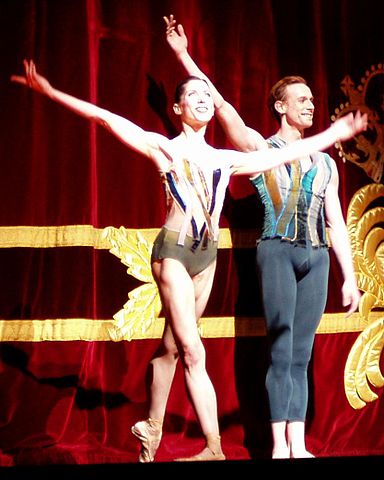 Leanne Benjamin, the recently retired Principal of The Royal Ballet Company, is perhaps one of the recently departed dancers who will be the most greatly missed. She recently appeared in Carlos Acosta’s Classical Selection, dancing roles in extracts from some of the best-loved classical and neo-classical pieces such as Mayerling and Manon, with passionate vigour and full commitment to the production.
Leanne Benjamin, the recently retired Principal of The Royal Ballet Company, is perhaps one of the recently departed dancers who will be the most greatly missed. She recently appeared in Carlos Acosta’s Classical Selection, dancing roles in extracts from some of the best-loved classical and neo-classical pieces such as Mayerling and Manon, with passionate vigour and full commitment to the production. Northern Ballet is offering audiences the opportunity to go behind the scenes and discover many theatrical secrets of ‘backstage’ at a free rehearsal event at its headquarters in Leeds. Deemed as the perfect treat for ballet lovers or an introduction to ballet, the event is set to take place on the evening of 14th August, offering audiences the chance to enjoy a cheeky preview of Northern Ballet’s latest production A Midsummer Night’s Dream. The events are the perfect chance to see Northern Ballet’s talented dancers up close and get a taste for the less well-known production, which will run from 6-14 September 2013.
Northern Ballet is offering audiences the opportunity to go behind the scenes and discover many theatrical secrets of ‘backstage’ at a free rehearsal event at its headquarters in Leeds. Deemed as the perfect treat for ballet lovers or an introduction to ballet, the event is set to take place on the evening of 14th August, offering audiences the chance to enjoy a cheeky preview of Northern Ballet’s latest production A Midsummer Night’s Dream. The events are the perfect chance to see Northern Ballet’s talented dancers up close and get a taste for the less well-known production, which will run from 6-14 September 2013. The prestigious Royal Ballet School announced the appointment of Christopher Powney as their Artistic Director Designate last month, who is due to step into the role in April 2014. The current Artistic Director, Gailene Stock, is sadly unwell, and will retire from her post on 31 August 2014. As a result, the summer term of 2014 will see Powney taking over the running of the School after a transitional period. Jay Jolley will continue in the role of Acting Director and will lead the School’s artistic programmes into the 2013/14 academic year.
The prestigious Royal Ballet School announced the appointment of Christopher Powney as their Artistic Director Designate last month, who is due to step into the role in April 2014. The current Artistic Director, Gailene Stock, is sadly unwell, and will retire from her post on 31 August 2014. As a result, the summer term of 2014 will see Powney taking over the running of the School after a transitional period. Jay Jolley will continue in the role of Acting Director and will lead the School’s artistic programmes into the 2013/14 academic year.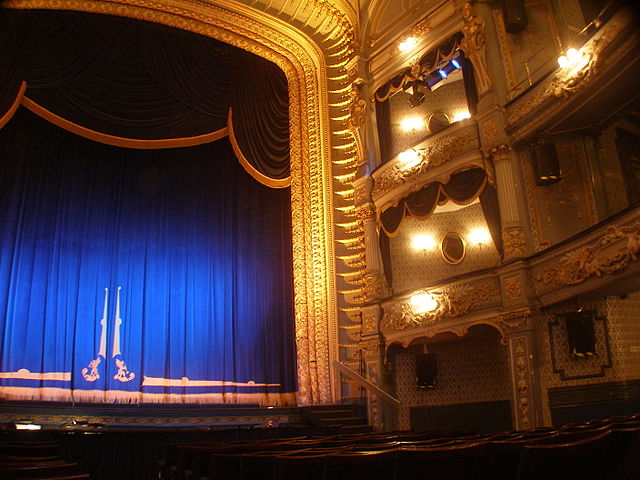 The theatre is a world of mystique, intrigue and illusion, serving to delight and entertain its audience with spectacle, no matter how otherworldly. This tradition of theatre is still upheld in many venues and arts spaces across the country and even across the world, but equally much of the previous spectacle has developed to accommodate the twenty first century. Productions have alternative intents, aiming to shock and provoke audiences rather than provide a successful model of theatre which has been proven to work.
The theatre is a world of mystique, intrigue and illusion, serving to delight and entertain its audience with spectacle, no matter how otherworldly. This tradition of theatre is still upheld in many venues and arts spaces across the country and even across the world, but equally much of the previous spectacle has developed to accommodate the twenty first century. Productions have alternative intents, aiming to shock and provoke audiences rather than provide a successful model of theatre which has been proven to work.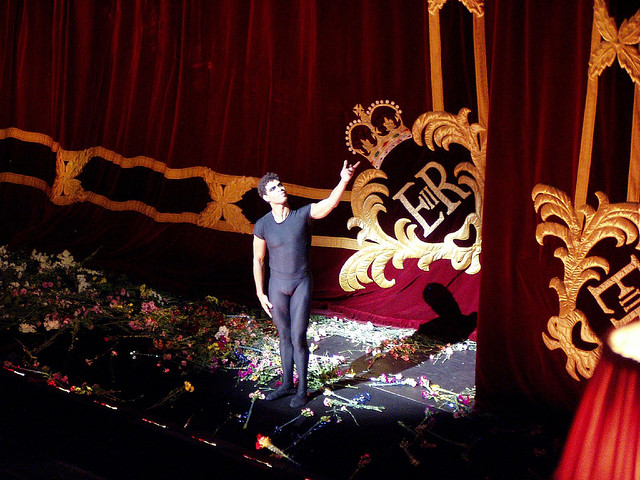 Carlos Acosta’s return to the London Coliseum in August is highly anticipated, particularly as the casting and classical repertory has recently been announced, forming Acosta’s Classical Selection. Running from July 30 to August 4, the run is full of huge ballet stars and iconic works.
Carlos Acosta’s return to the London Coliseum in August is highly anticipated, particularly as the casting and classical repertory has recently been announced, forming Acosta’s Classical Selection. Running from July 30 to August 4, the run is full of huge ballet stars and iconic works.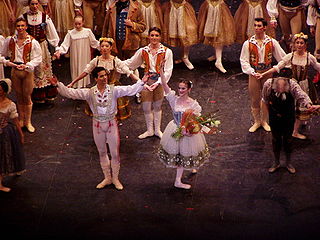 As a choreographic work which does not end in death for the main protagonists, Coppélia is a light-hearted comedic ballet, with a narrative which delights audience with its humour, magic and a happy ending.
As a choreographic work which does not end in death for the main protagonists, Coppélia is a light-hearted comedic ballet, with a narrative which delights audience with its humour, magic and a happy ending.